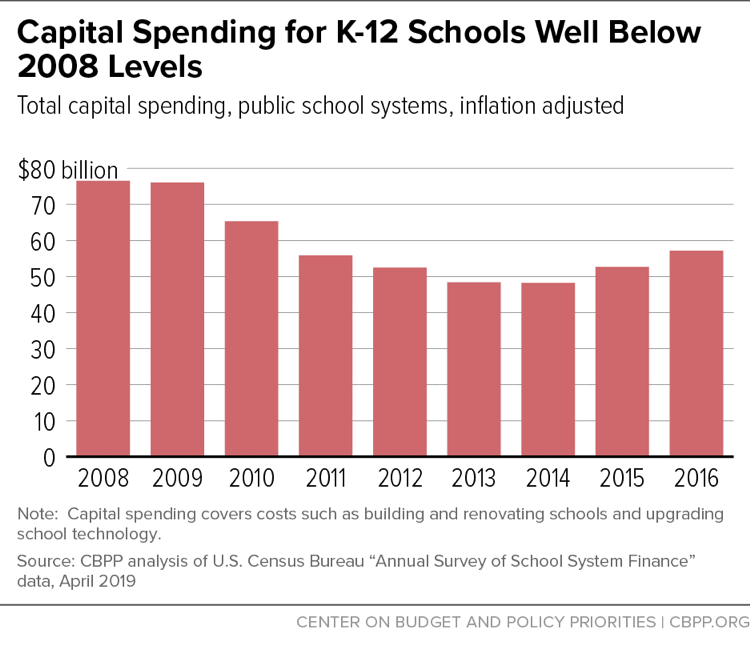BEYOND THE NUMBERS
Summer is often a time to repair and improve school buildings or finish building new ones, but the nation’s K-12 schools — especially in low-income neighborhoods — have been neglected for years. The coming onset of summer provides a timely reminder that states should move more forcefully to help address the need.
State cuts to K-12 education over the past decade have affected more than school operating budgets for teacher salaries, textbooks, and classroom needs. Capital spending — for example, to build new schools, renovate and expand facilities, and equip schools with more modern technologies — has also fallen sharply in most states. And state and local spending on infrastructure in general is at a historic low as a share of the economy. States have been restoring K-12 education funding in recent years, but progress has been slow and uneven and public schools still have serious needs.
The cost to bring all K-12 school buildings into good overall condition is $197 billion, according to a 2014 study by the federal Education Department. Schools in high-poverty areas, which children of color disproportionately attend, most need the repairs that correlate with improved academic achievement.
Nationally, elementary and secondary schools cut capital spending by $19 billion, or 25 percent, between fiscal years 2008 and 2016 (the latest year for which we have data), after adjusting for inflation. (See graph.)
The federal government plays an important role in building and maintaining public infrastructure — especially in evening out disparities in opportunity based on income and for students with disabilities — but it’s been an unreliable partner, failing to provide adequate funding to address needs. Recent proposals highlight ways that it could help address the need to build and repair the nation’s schools: last year’s Jobs & Infrastructure Plan for America’s Workers and this year’s Rebuild America’s Schools Act included funding for public schools targeted to areas that need it most and that lack local resources. Both plans include resources for schools that the Bureau of Indian Education funds. Meanwhile, President Trump and Democratic congressional leaders discussed potential infrastructure investment plans yesterday at the White House.
But states shouldn’t wait for the federal government to reinvest in school buildings and equipment upgrades. Our ability to unleash the potential of every child, and our nation’s future prosperity, depends on it.

